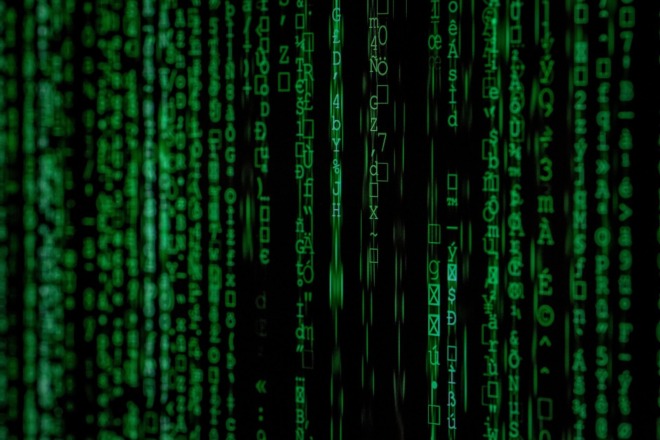Starting to learn Python has become essential in the business world. It offers professionals a powerful tool to innovate and stay competitive. Python is celebrated for its versatility. It seamlessly handles tasks like data analysis, process automation and creating custom solutions tailored to business needs.
Its beginner-friendly design — with straightforward and readable syntax — makes it an excellent choice for marketers and designers looking to dip their toes into programming. Python can unlock endless opportunities for anyone aiming to streamline workflows, uncover data-driven insights or future-proof their skill set.
Why Learn Python?
Python is a powerhouse for automation, enabling businesses to operate more efficiently by eliminating time-consuming manual tasks. Its data science and analysis capabilities make it essential for extracting insights from large datasets, reducing hours spent sifting through information. With libraries like pandas and Matplotlib, users can quickly analyze trends, visualize key metrics and generate comprehensive reports.
Python also excels in marketing automation, handling tasks like email personalization, campaign tracking and building custom dashboards tailored to business goals. Beyond these immediate benefits, Python is a gateway to advanced technologies like AI and machine learning, giving businesses the tools to stay ahead in the digital landscape.
Python Basics: What You Need to Know
Python is a free, open-source programming language that’s easy to set up and use. It’s ideal for anyone new to coding or seasoned developers looking for flexibility. Its clean and intuitive syntax allows users to focus on solving problems without getting bogged down by complicated code. Meanwhile, its extensive library support provides ready-made tools for tasks ranging from data analysis to web development.
Core concepts like variables (used to store data), loops (which repeat tasks) and functions (reusable blocks of code) are straightforward, helping beginners quickly build foundational skills. Tools like text editors or integrated development environments (IDEs) offer user-friendly features to streamline the learning process for writing and running Python code. Whether automating tasks or exploring advanced applications, Python’s simplicity and versatility stand out.
Setting Up Your Learning Path
Getting started with Python doesn’t have to be overwhelming, even for complete beginners. Following a clear, step-by-step approach, anyone can build a solid foundation and use Python for practical, real-world applications.
Install Python
The best place to download Python is directly from its official website, ensuring a secure and up-to-date version. The setup process is quick and beginner-friendly:
- Select the version that matches the operating system.
- Follow the installation prompts.
- Check the option to add Python to the system’s PATH for seamless use.
With Python installed, they’ll have everything needed to start writing and running their first lines of code quickly.
Start with Online Sources
For beginners looking to learn Python, free online courses on platforms like Codecademy and freeCodeCamp provide a structured and interactive way to start. These resources offer hands-on exercises and step-by-step tutorials for those with little coding experience.
Additionally, Python’s official documentation is a comprehensive reference, offering clear explanations and examples to deepen understanding as users progress. These tools make learning the program accessible and effective.
Practice with Real-World Scenarios
Practicing Python with real-world scenarios is one of the most effective ways to build skills and confidence. Marketers can use Python to automate spreadsheet tasks — such as cleaning up data or generating reports — saving valuable time.
Business owners can explore web scraping to gather insights on competitors, customer reviews or market trends. Designers can create simple apps to streamline workflows, such as automating repetitive design processes or organizing project files. These practical applications reinforce learning and show how Python can solve everyday challenges.
Common Challenges for Beginners and How to Overcome Them
Learning Python as a beginner can be exciting, but it also comes with challenges. From understanding new concepts to staying motivated, overcoming these hurdles allows users to build confidence and make steady progress.
Understanding Syntax and Errors
Understanding Python’s syntax and dealing with errors can feel overwhelming for beginners, but they’re essential to learning. Python’s error messages are beneficial, often pointing out precisely what went wrong and providing clues for how to fix it.
Starting with simple programs — like printing a message or performing basic calculations — allows beginners to focus on mastering the basics without feeling overloaded. Embracing mistakes as learning opportunities can build confidence and develop problem-solving skills for programming success.
Staying Motivated
Maintaining motivation while learning Python is easier when beginners focus on projects they’re passionate about or directly relevant to their work. Creating something meaningful — whether automating routine tasks, building a business tool or crafting a simple app — gives purpose to the learning process and keeps it engaging.
Working on a project that resonates with their interests lets beginners stay excited about Python while applying their skills to solve real-world problems. This hands-on approach reinforces learning and provides a sense of accomplishment that fuels ongoing progress.
Feeling Overwhelmed by Libraries and Tools
The abundance of Python libraries and tools can feel overwhelming, making it tempting to dive into everything simultaneously. However, it’s important to start with the basics, mastering core concepts like variables, loops and functions before exploring advanced libraries or frameworks.
Building a strong foundation first allows learners to avoid feeling lost in the complexity of more specialized tools and gradually gain the confidence to tackle them as their skills grow. Taking it step by step helps prevent burnout and ensures a more manageable, rewarding learning experience.
Finding Time to Learn
Finding time to learn Python can feel daunting, but even a small daily commitment can lead to big results. Setting aside 20-30 minutes daily for consistent practice helps beginners build momentum without feeling overwhelmed.
Online platforms offer bite-sized programming challenges that fit a busy schedule and reinforce key concepts. Making Python practice a management part of their routine lets learners steadily grow their skills and stay motivated, even with a packed calendar.
Tips to Stay Consistent and Motivated
Staying consistent and motivated while learning Python can be challenging, but setting achievable goals and maintaining a positive mindset can make the process more enjoyable. Here are some actionable tips to help:
- Set clear, achievable goals: Break learning into small, manageable milestones, such as mastering one new concept each week.
- Incorporate Python into daily tasks: Apply Python to real-world problems, like automating a workflow or analyzing personal data, to make practice feel relevant and rewarding.
- Join a community: Participate in Python forums or local coding groups to share progress, seek advice and stay inspired by others.
- Build projects you care about: To keep learning engaging, focus on creating something meaningful, like a tool for work or a fun side project.
- Track your progress: Keep a journal or use a checklist to celebrate milestones, reinforcing a sense of accomplishment.
- Schedule regular practice sessions: Dedicate a specific time each day or week to learning Python, making it a consistent habit.
- Reward yourself for small winds: Celebrate completing lessons or solving challenges to stay motivated and recognize your growth.
These tips help learners turn Python practice into an exciting, sustainable journey.
Starting to Learn Python Made Simple
Python is designed to be accessible to everyone, no matter their technical background or experience level. The first step is simple — download Python from its official website or sign up for a beginner-friendly course to unlock its potential today.
About The Author
Eleanor Hecks is the Editor-in-Chief of Designerly Magazine, an online publication dedicated to providing in-depth content from the design and marketing industries. When she's not designing or writing code, you can find her exploring the outdoors with her husband and dog in their RV, burning calories at a local Zumba class, or curled up with a good book with her cats Gem and Cali.
You can find more of Eleanor's work at www.eleanorhecks.com.


